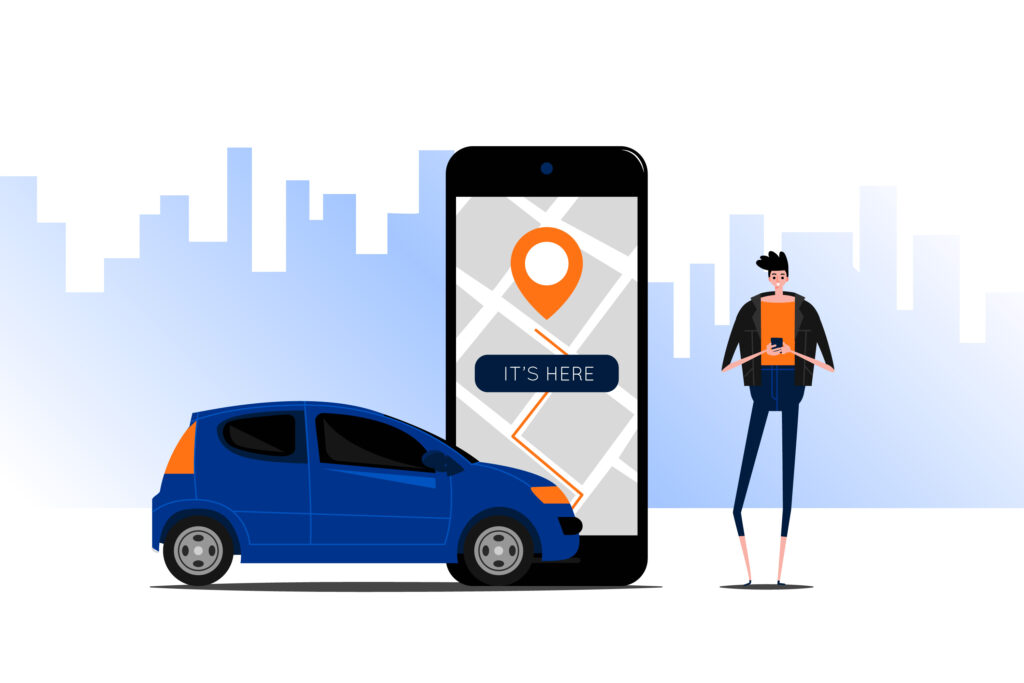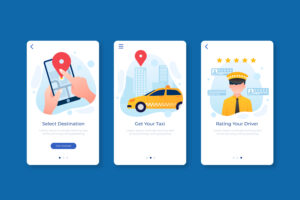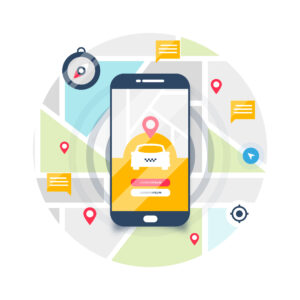How To Create An App Like Uber?
9 min read
Uber dominates its market, serving as the undisputed leader. This triumph has fueled numerous businesses and startups to emulate the Uber model. Although the market presents ample opportunities, it is saturated with Uber alternatives. Consequently, the task at hand is not merely to create a taxi booking app but one that stands out for its uniqueness and relevance in the market.
In this blog, we will delve into the process to build an app like Uber, utilizing a taxi app development solution. Let’s dive right in:
Creating an App like Uber: Analyzing Uber
The world of transportation has witnessed a remarkable transformation with the advent of ride-sharing apps. Uber, the trailblazer in this industry, has set a standard that many aspire to reach. In this guide, we’ll unravel the intricacies of creating a ride-sharing app like Uber, exploring the key steps and considerations that can pave the way for your success.
1. Market Research and Analysis to Create an app like Uber
Defining the Ride-Sharing Landscape
To embark on the journey of creating a successful ride-sharing app, understanding the landscape is paramount. Start by identifying the demographics of your target audience. What are their commuting habits, preferences, and pain points? This knowledge forms the foundation for tailoring your service to meet specific needs.
The Uber Success Story
Delve into the story of Uber’s rise to prominence. Beyond being a transportation service, Uber introduced a new way of thinking about urban mobility. Learn from Uber’s triumphs, such as its innovative use of technology, and also from its challenges, such as facing regulatory hurdles. Things you should look at before you go to an iPhone app development service or an Android one.
2. Features to Include in an App Like Uber
Uber’s application comprises two distinct segments: the Customer’s side and the Driver’s side. Following a similar structure proves to be an effective and seamless approach. Let’s explore the essential features for both sides, starting with the Customer’s app.
-
For Customer’s App
The customer holds a central position in any business, and instilling confidence in your application is paramount. This can be achieved by integrating compelling features into the customer’s app, a task easily accomplished with the assistance of mobile app development services.
i. Geo-Location and Routing
Geolocation is a fundamental feature that enables customers to track the location of their ride and estimate its proximity. Additionally, routing simplifies the ride-booking process, making it more user-friendly.
ii. Payment Method Integration
Seamless integration of payment methods is crucial, considering the trend towards cashless transactions. Emulate Uber’s success by offering multiple payment options, fostering convenience and trust.
iii. User Registration
User registration is a basic yet indispensable feature. It not only enables customers to track their activities but also aids businesses in maintaining real-time user data for analytics.
iv. Communication
Effective communication between drivers and riders enhances the overall user experience. Enabling real-time interaction ensures that users are well-informed about their rides, fostering trust.
v. Push Notifications
Push notifications serve as a simple yet effective tool for keeping customers informed about their ride details. They provide updates on the ride’s position, arrival time, and other pertinent information, improving user engagement.
vi. Ride Cost Estimate
Offering a ride cost estimate provides users with valuable information on potential expenses based on factors like pickup and drop locations and chosen cab type. This feature empowers users to make informed decisions.
vii. Schedule a Ride
Allowing users to schedule rides in advance proves beneficial, especially for those arriving via flights or trains who wish to avoid waiting for their ride upon arrival.
viii. Fare Splitting
While not essential, fare splitting is a desirable feature that allows friends to divide expenses easily. Given the popularity of bill splitting, this feature can contribute to the app’s success.

-
For Driver’s App
The driver’s side of the app is equally crucial, as effective communication and interaction are essential for providing quality services.
i. Driver Report
Including a driver report feature is essential for ensuring rider safety and improving driver behavior. This report provides insights into the driver’s driving methods and adherence to road rules over time, enabling businesses to take appropriate measures.
ii. Advanced Route Building
Incorporating advanced route building features enhances the driver’s ability to navigate efficiently. This can lead to optimized routes, shorter ride times, and an improved overall experience for both drivers and riders.
iii. Driver Destinations
The Driver Destinations feature allows drivers to choose preferred locations, providing flexibility for drivers and making it easier for passengers to find a cab.
In summary, developing an app like Uber involves a thoughtful consideration of features for both customers and drivers. By incorporating these essential features, you can create a robust and user-friendly platform that stands out in the competitive ride-sharing market.

3. Choosing the Right Business Model
Exploring Revenue Models in Ride-Sharing
Ride-sharing businesses can adopt various revenue models. Whether it’s a commission-based approach, subscription services, or advertising within the app, understanding these models is pivotal. Choose the model that aligns with your business goals and provides sustainable revenue.
4. Legal and Regulatory Compliance
Navigating Local Regulations
The regulatory landscape for ride-sharing services varies across regions. Before launching your app, thoroughly research and understand the legal requirements in each area of operation. This proactive approach can save you from potential legal complications down the road.
Ensuring Legal Compliance
From obtaining the necessary licenses to complying with insurance regulations, legal compliance is non-negotiable. Establish a legal framework that not only protects your business but also ensures a safe and regulated environment for users and drivers.
5. Technology Stack for App Development
Selecting the Right Tools and Platforms
Choosing the appropriate technology stack is critical for the performance and scalability of your app. Consider factors like the user base, expected traffic, and future expansion plans when selecting tools for both the front-end and back-end development.
Implementing Geolocation and Real-Time Tracking
The core functionality of a ride-sharing app relies on geolocation services and real-time tracking. Integrate these features seamlessly to provide users with accurate information about the location of their ride and estimated arrival time.
6. Designing the User Interface and Experience
Creating an Intuitive and User-Friendly App
A user-friendly design is the key to retaining users. Work closely with the best UI/UX designers to create an app like uber interface. Ensure that users can easily navigate through the app and perform actions without unnecessary complications.
Importance of Prototyping
Prototyping is a valuable step in the design process. Test prototypes with potential users to gather feedback on the user flow, layout, and overall experience. Iterative prototyping allows you to refine your app design based on real user interactions.
7. Development Phase
Building Front-end and Back-end Components
Collaborate with experienced developers to build robust front-end and back-end components. The front end should provide a seamless and visually appealing user interface, while the back end should handle the complex algorithms and data processing. This should not be a problem as php development services can do it for you.
Testing for Stability and Security
Thorough testing is crucial to identify and rectify any bugs or security vulnerabilities. Conduct extensive testing on different devices and operating systems to ensure the stability and security of your app before the launch.
8. Launching Your Ride-Sharing App
Deploying to App Stores
Publish your app on major platforms like the App Store and Google Play. Optimize your app listing with compelling visuals and clear descriptions to attract potential users.
Implementing Effective Marketing Strategies
A successful app launch requires a robust marketing strategy. Utilize social media, influencer partnerships, and promotional campaigns to create awareness and attract both riders and drivers to your platform.
9. Ensuring Security and Privacy
Implementing Robust Data Protection Measures
User data security is a top priority. Employ encryption and other security measures to safeguard user information. Regularly update security protocols to stay ahead of potential threats.
Compliance with Privacy Regulations
Adhere to privacy regulations and clearly communicate your data protection practices to users. Building trust through transparent privacy policies is crucial for user retention.
10. Feedback Mechanism and Continuous Improvement
Gathering User Feedback
Create avenues for users to provide feedback. Actively seek their opinions on the app’s functionality, features, and overall experience. User feedback is invaluable for making continuous improvements.
Adapting to Market Trends
Stay vigilant to evolving market trends. Monitor competitor activities and be ready to adapt your app by incorporating innovative features or improvements to stay ahead in the dynamic ride-sharing landscape.
11. Customer Support Strategies
Setting Up Effective Customer Support
Establish a responsive customer support system to address user queries and concerns promptly. A positive customer service experience can significantly impact user satisfaction and loyalty.
Addressing User Inquiries and Complaints
Handle user inquiries and complaints with empathy and efficiency. Swift resolution of issues builds trust and enhances the overall user experience.
12. Monitoring App Performance
Regular Evaluation and Improvement
Regularly evaluate your app’s performance using analytics tools. Identify areas for improvement based on user interactions, app usage patterns, and feedback.
Dealing with Technical Issues Swiftly
Technical issues may arise unexpectedly. Have a dedicated team in place to address and resolve issues promptly, minimizing any disruption to the user experience.
Conclusion
In conclusion, creating a ride-sharing app akin to Uber is a multifaceted process that requires meticulous planning and execution. From understanding the market to ongoing improvements, each step contributes to the success of your venture. Remember, the world of ride-sharing is ever-evolving, and staying attuned to user needs is the key to long-term success.
FAQs
-
How much does it cost to develop a ride-sharing app?
The development cost varies based on features and complexity. A rough estimate is between $100,000 to $500,000, considering factors such as app design, functionality, and technology stack.
-
What are the primary challenges in creating a successful app like Uber?
Challenges include fierce competition, navigating complex regulatory landscapes, and balancing user and driver interests.
-
How can I attract more drivers to my ride-sharing platform?
Offer competitive incentives, ensure fair earnings, and create a supportive driver community. Transparency in policies and timely payments also contribute to driver attraction and retention.
-
What measures should be taken to ensure user data security?
Implement robust encryption protocols, conduct regular security audits, and strictly adhere to data protection regulations to ensure the highest standards of user data security.
-
Is it essential to conduct market research before launching a ride-sharing app?
Yes, market research is fundamental. Understanding user preferences, analyzing competitor strategies, and staying informed about market trends are critical components that shape the success of your ride-sharing app.
-
How to start an app like Uber?
To develop an Uber-like app, a meticulous and systematic approach is essential. This includes conceptualizing the app, analyzing competitors, choosing technology, assembling a skilled team, creating functionalities, testing, launching, collecting feedback, and strategizing for improvements. Regular updates and collaboration with experts can help to make your own uber app.
-
How to build an app like Uber?
To make app like uber, you need a clear strategy and skilled developers. This involves conceptualizing the app, analyzing competitors, choosing technology, assembling a team, creating functionalities, testing, launching, collecting feedback, and planning enhancements. Regular updates based on user feedback and market trends are crucial. The estimated cost for building such an app ranges from $57,000 to $114,000 for one or two platforms, excluding the admin panel development cost.
You can contact Suntech Applications for any app development services!






